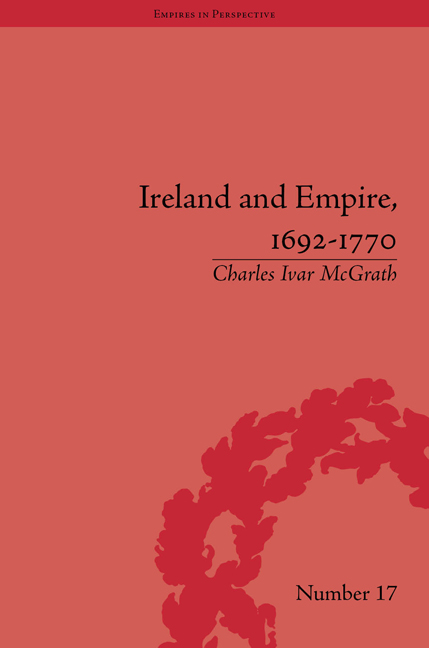7 - Income, Expenditure and Taxation
from Part 3 - Finance
Summary
Ireland's contribution to empire in the period 1692–1770 has been examined thus far in terms of the sustaining of the army both at home and abroad and in the innovative undertaking to build and maintain a countrywide network of barracks. But that contribution would not have been possible without a more immediate and fundamental commitment of money to the public purse for the purposes of covering the expense of the army and barracks. To fully measure that military contribution, it is necessary to assess exactly how much money was spent on that enterprise, what percentage of Ireland's public funds that expenditure represented, where the money came from in the first place, and the degree of innovation, experimentation and political and public commitment evident therein towards making that financial contribution. This chapter examines these matters in relation to public income and expenditure in general and to taxation in particular.
Income and Expenditure
Annual income and expenditure in Ireland rose steadily during the period 1692–1770. In the early seventeenth century, government income from Irish revenue sources fluctuated between £15,000 and £27,000. With expenditure always being greater, constant subventions of between £8,000 and £67,000 were required from England. The revolutionary circumstances of the 1650s saw wholly exceptional income levels attained with internal sources producing on average £264,900 per annum with a further £213,758 provided from England. The collapse of the Protectorate in 1659 saw the internal annual yield from the existing permanent or hereditary revenues drop to somewhere between £35,000 and £70,000. In the short-term further subventions were received from England, but the continuation of such a situation was no longer acceptable in the long term. The solution was provided in a Restoration financial settlement voted to the Crown in the 1660s which established the foundations for a secure tax base able to sustain improving public income yields in the following decades.
The Restoration settlement led eventually to the highs of the 1650s being exceeded by the 1680s in both gross and net annual yields, which peaked at £325,228 and £286,516 respectively in 1686.
- Type
- Chapter
- Information
- Ireland and Empire, 1692–1770 , pp. 167 - 180Publisher: Pickering & ChattoFirst published in: 2014



